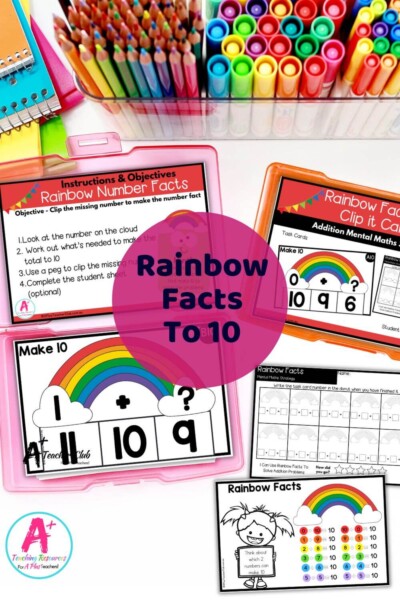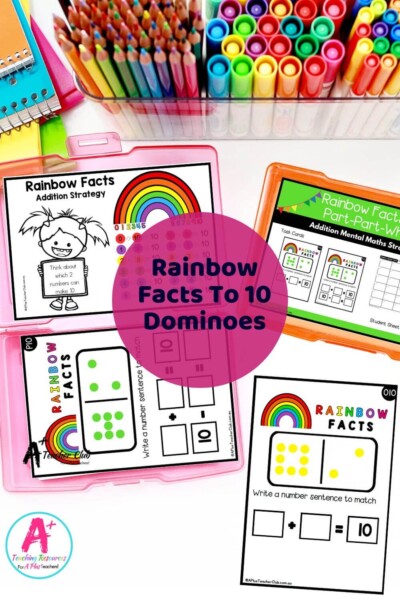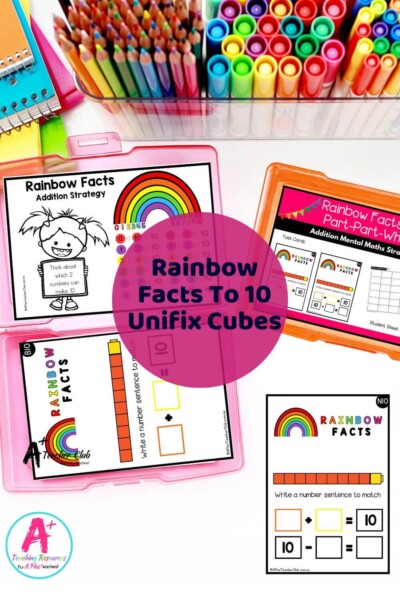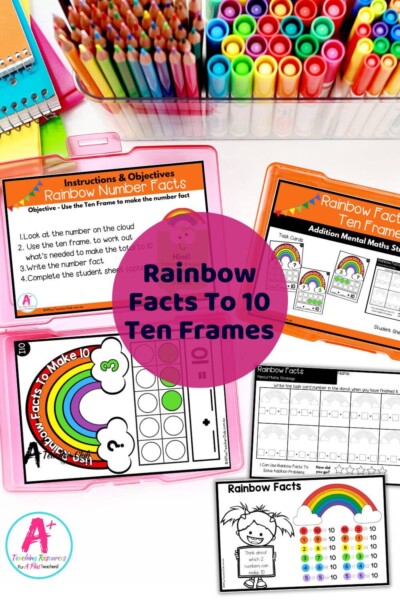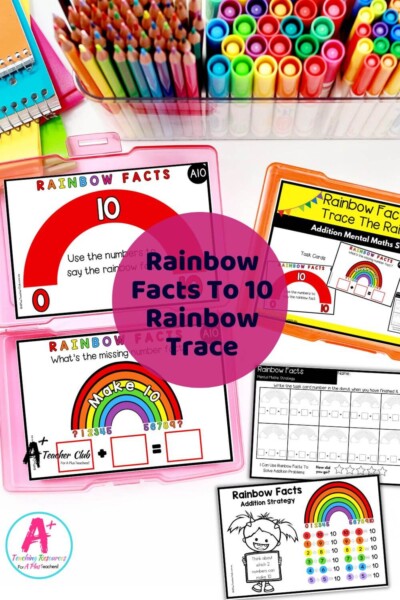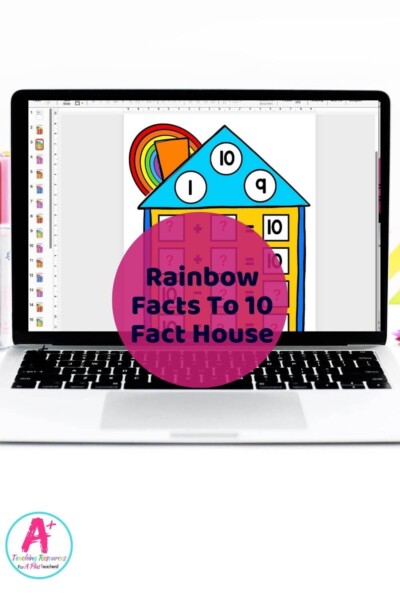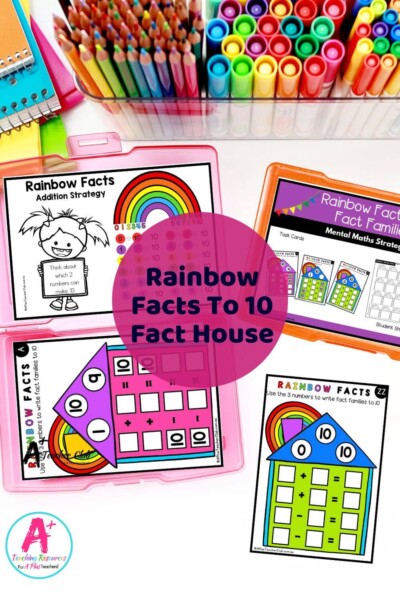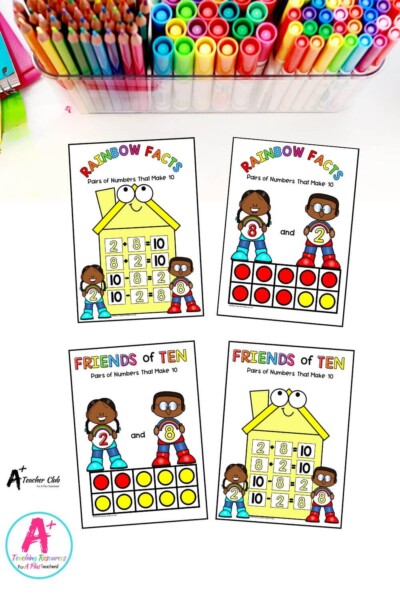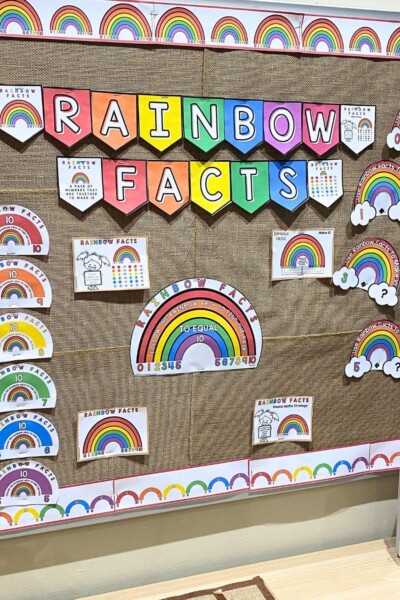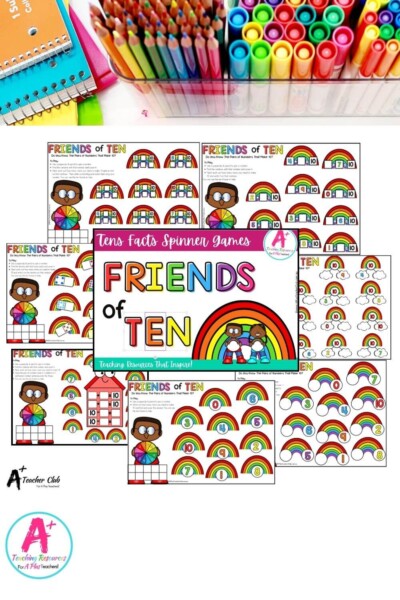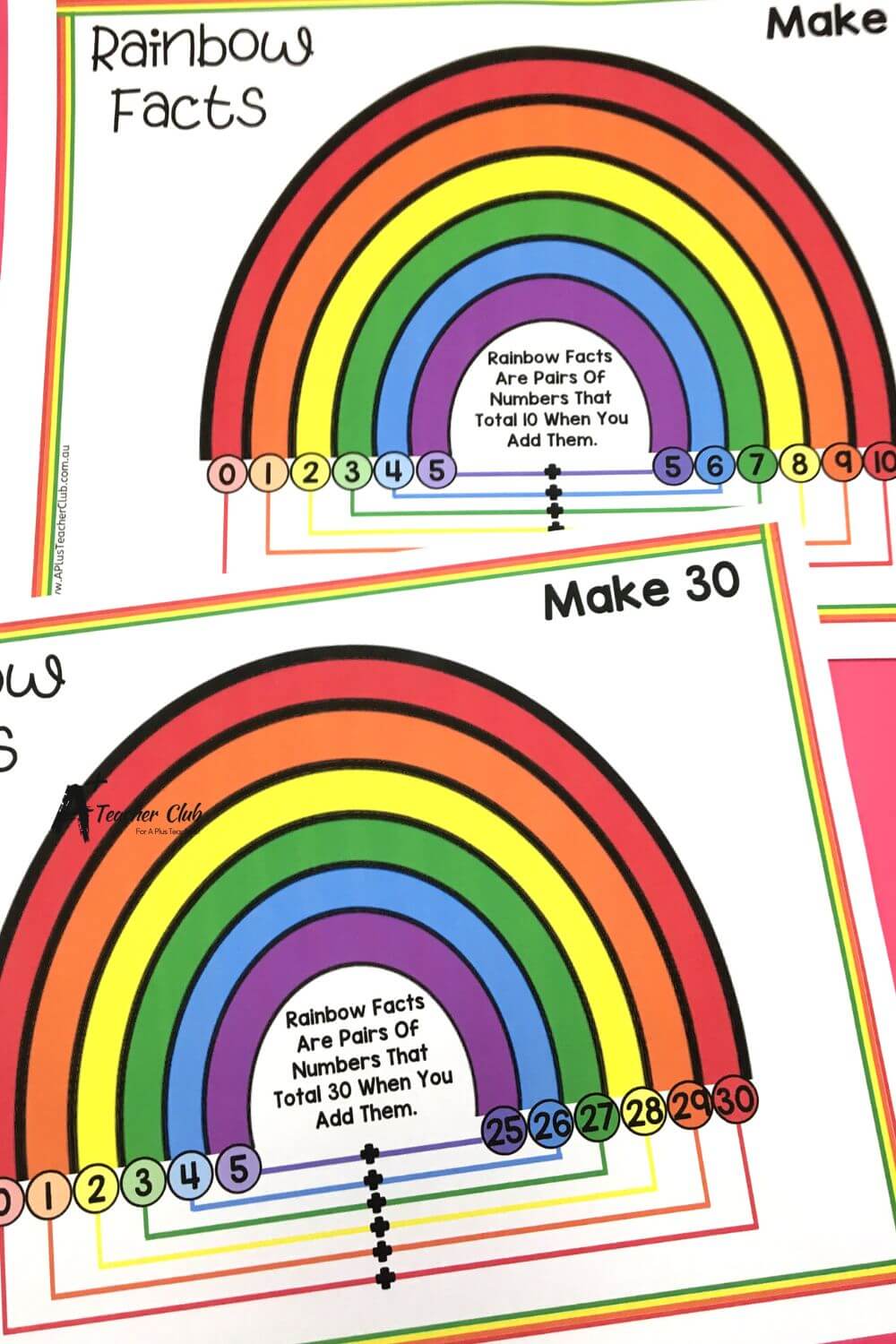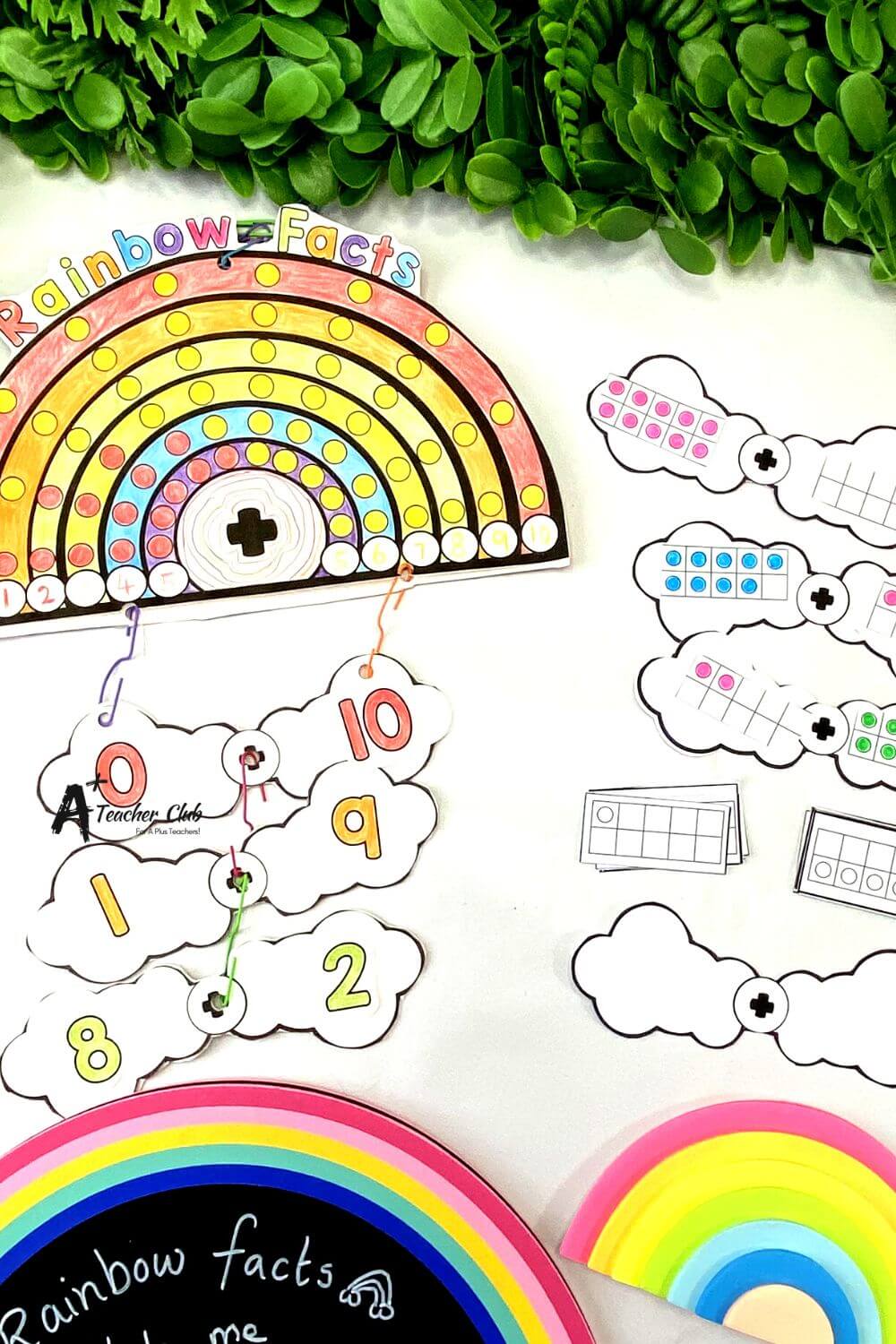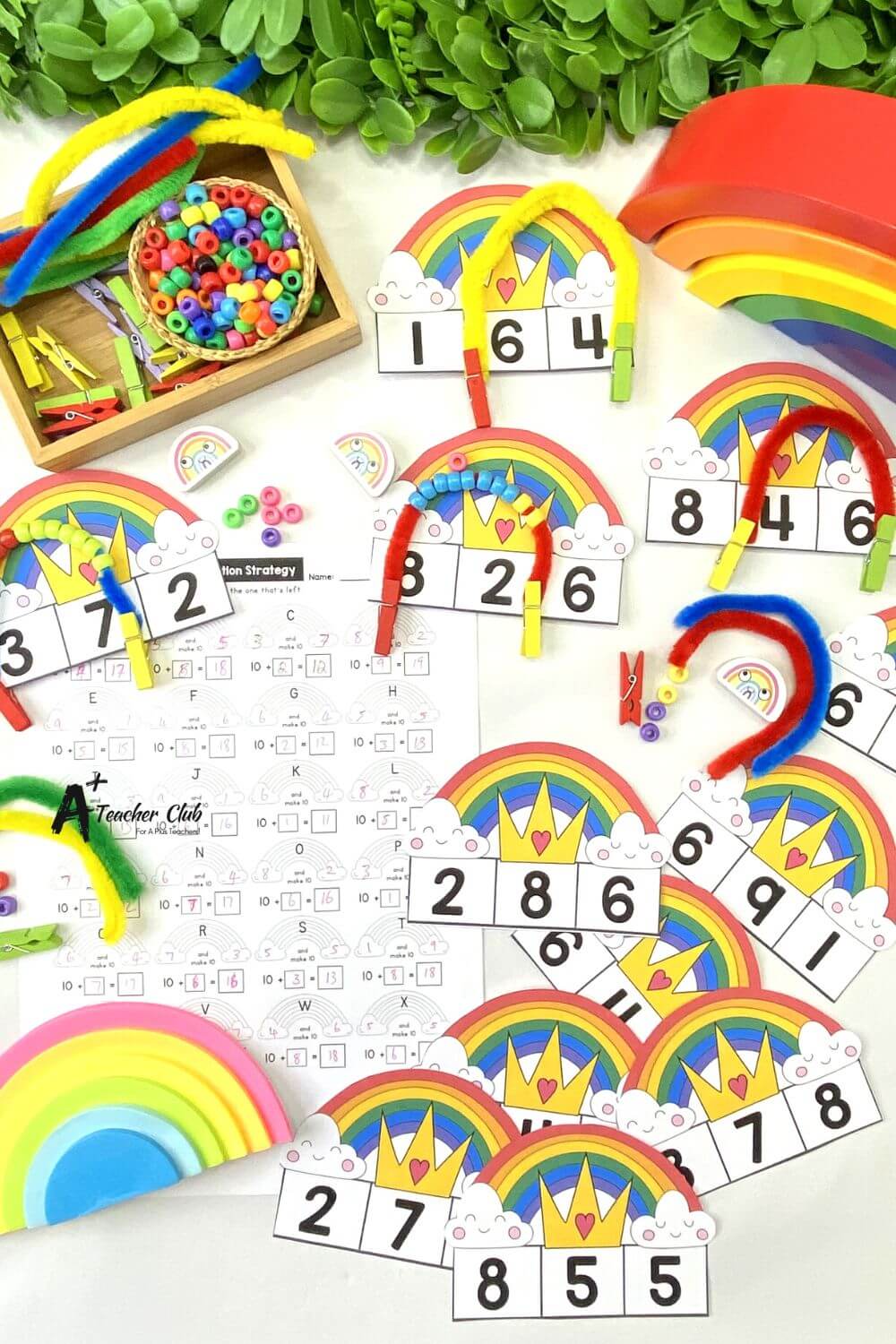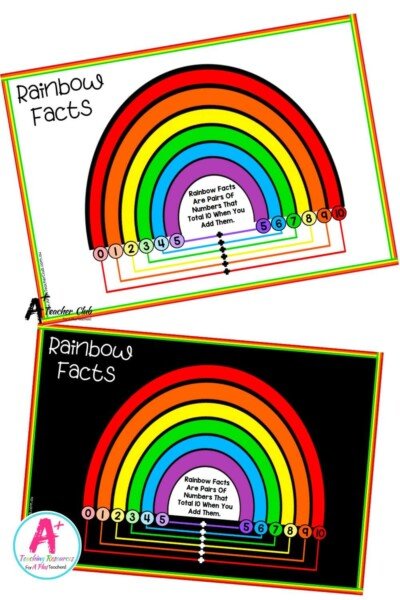Rainbow Facts Maths -Fun Mental Maths to Make 10!
Mental Maths
Looking for a fun way to teach mental maths and number facts to 10? Rainbow Facts are a colourful, visual, and engaging strategy for helping young learners quickly recall addition and subtraction facts that make 10.
In this post, we’ll explain what Rainbow Facts are, why they’re important, and how to teach them effectively in your classroom.
What are Rainbow Facts?
Rainbow Facts are number pairs that add up to 10. They get their name from the way they can be visually arranged as a rainbow, with matching number pairs arcing across from each other:
Here are some examples of rainbow facts:
- 0 + 10 = 10 related subtraction fact 10 – 0 = 10
- 1 + 9 = 10 related subtraction fact 10 – 1 = 9
- 2 + 8 = 10 related subtraction fact 10 – 2 = 8
- 3 + 7 = 10 related subtraction fact 10 – 3 = 7
- 4 + 6 = 10 related subtraction fact 10 – 4 = 6
- 5 + 5 = 10 related subtraction fact 10 – 5 = 5
- 6 + 4 = 10 related subtraction fact 10 – 6 = 4
- 7 + 3 = 10 related subtraction fact 10 – 7 = 3
- 8 + 2 = 10 related subtraction fact 10 – 8 = 2
- 9 + 1 = 10 related subtraction fact 10 – 9 = 1
- 10 + 0 = 10 related subtraction fact 10 – 0 = 10
These facts help students quickly build fluency with making 10, a core mental maths skill for early learners.
How to Teach Rainbow Facts
Teaching Rainbow Facts mental maths to kids is a great way to help them improve their basic addition skills. Here are some tips on how to do it:
- Start with the basics: Before introducing Rainbow Facts, make sure your child is familiar with basic addition facts. This will make it easier for them to understand the concept of Rainbow Facts.
- Use the Rainbow Facts Poster to show your students how to trace along a colour on the rainbow to find a partner pair.
- Use visual aids: You can use manipulatives like coloured counters or blocks to help your child visualise the Rainbow Facts. For example, if you are teaching the Rainbow Fact for the number 6 (2 + 4 = 6), you can use two blue counters and four yellow counters to represent the numbers.
- Practice, practice, practice: Repetition is key when it comes to learning Rainbow Facts. Encourage your child to practice regularly, and make sure they understand the concept before moving on to the next set of facts.
- Introduce the subtraction facts simultaneously and build a fact family of 4 to show how the same 3 numbers can be used to create 3 more facts.
Teaching Rainbow Facts mental maths to kids is a great way to help them improve their basic addition skills. By starting with the basics, using visual aids, making it fun, practising regularly, and using real-life examples, you can help your child master these colourful and easy-to-remember addition facts until they become automatic.
Try Our Rainbow Facts Resources!
Our downloadable Rainbow Facts activities include:
- Printable posters and number bonds mats
- Clip cards and rainbow matching games
- Worksheets and flashcards
- Fact family house templates
All aligned with the Australian Curriculum (v9) and ideal for Foundation to Year 2.
Resources listed in this collection
Click to jump to...-
Rainbow Facts Clip It Task Cards (10)
-
Rainbow Facts Rainbow Part-Part-Whole Number Bonds Task Cards (10)
-
Rainbow Facts Rainbow Part-Part-Whole Dominoes Task Cards (10)
-
Rainbow Facts Rainbow Part-Part-Whole Unifix Cubes Task Cards (10)
-
Rainbow Facts Ten Frame Task Cards (10)
-
Rainbow Facts Rainbow Trace Task Cards (10)
-
Rainbow Facts & Friends of 10 - Spin & Cover Task Cards
-
Rainbow Facts To 10 Fact Houses PowerPoint
-
Rainbow Facts Addition & Subtraction Houses (10)
-
Rainbow Facts & Friends of 10 Classroom Posters
-
Rainbow Facts Display Kit (10)
-
Rainbow Facts Friends of 10 Spinner Games
-
Rainbow Facts To 100 Puzzles
-
Rainbow Facts To 100 Posters
-
Rainbow Facts To 100 Worksheets
-
Rainbow Facts To 100 Write & Wipe Math Centre
-
Rainbow Facts To 10 Craft (Updated-2024)
-
Rainbow Bridging To 10 Task Cards
-
Rainbow Facts Free Posters
Rainbow Facts to 10 Task Cards
Rainbow Facts Resources
More Mental Maths Resources

Place Value - Partitioning Numbers
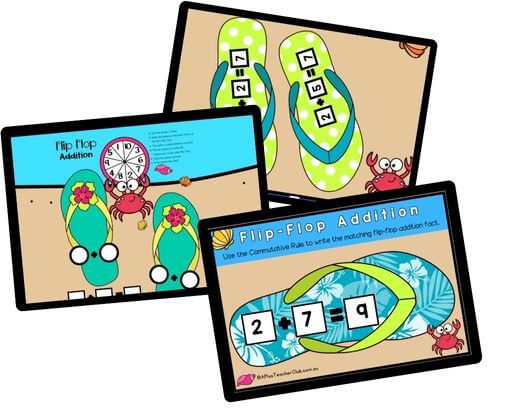
Commutative Property - Flip-Flops Addition Mental Maths
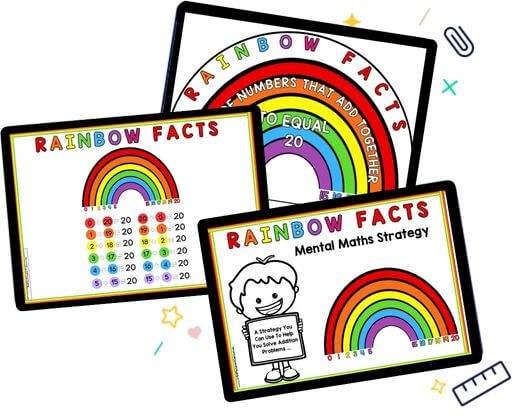
Rainbow Facts to 20 - Addition Mental Maths Strategy
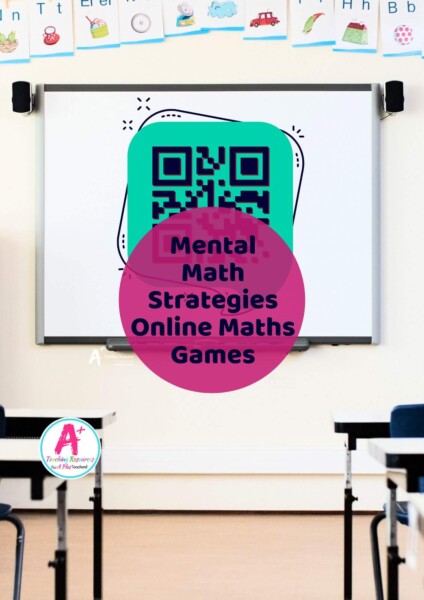
Digi Mental Maths Strategies Games
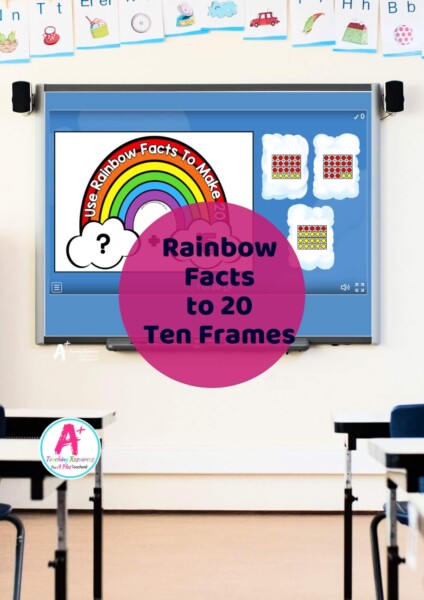
Addition Rainbow Facts -20 (ten frames)
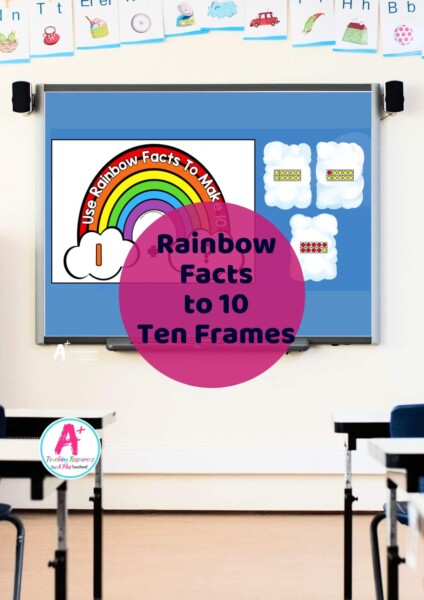
Addition Rainbow Facts -10 (ten frames)

Addition Rainbow Facts - 30 (missing Numbers)
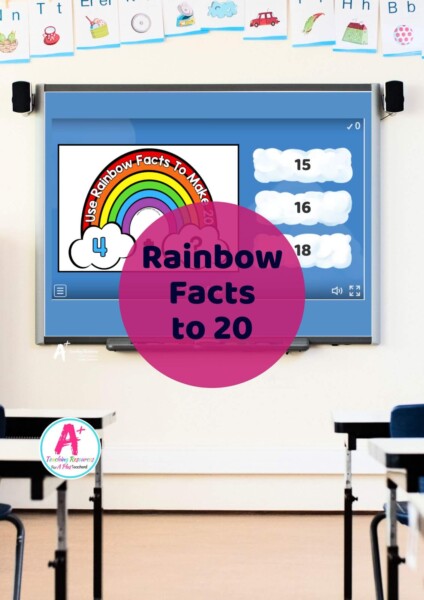
Addition Rainbow Facts -20 (missing numbers)

Addition Rainbow Facts -10 (missing numbers)

Explore Our Mental Maths Strategies Collection
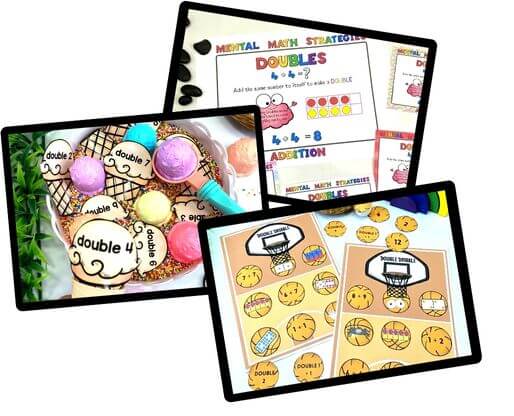
Doubles & Near Doubles Mental Maths Strategy
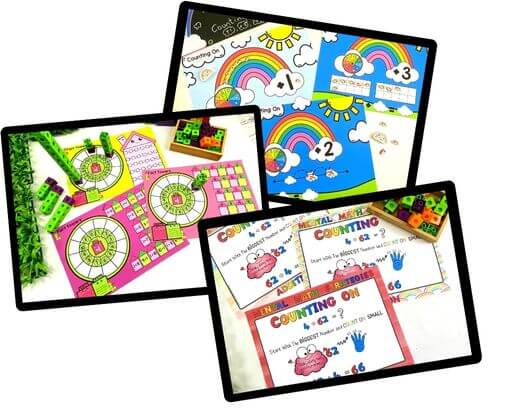
Counting On Mental Maths Strategy
Can't find what you're looking for?
Send us a request! Use this form to request a resource. Please give details of the learning area, topic, year level, curriculum links. We’ll be happy to take a look to see if we can fit it in. Unfortunately a request does not guarantee we will be able to make it!
"*" indicates required fields

